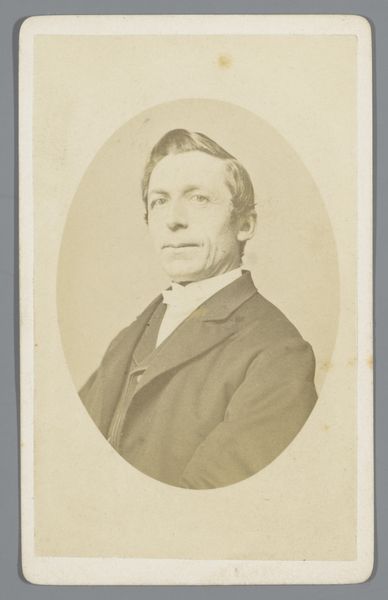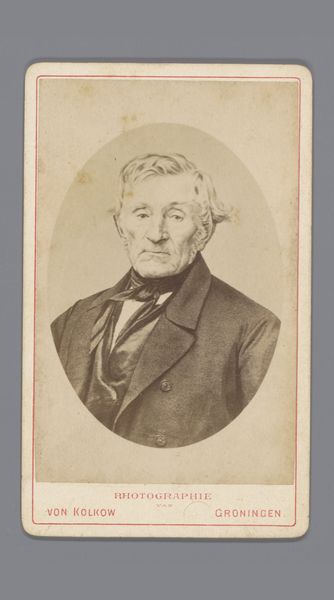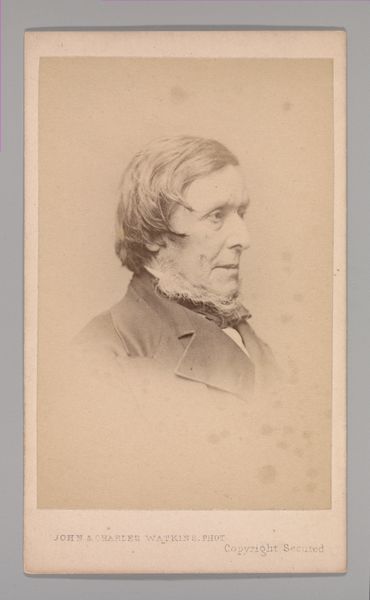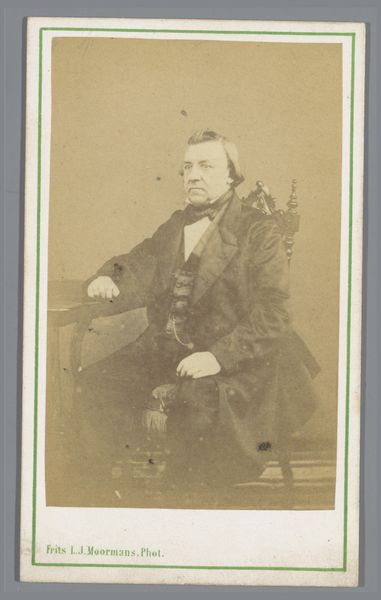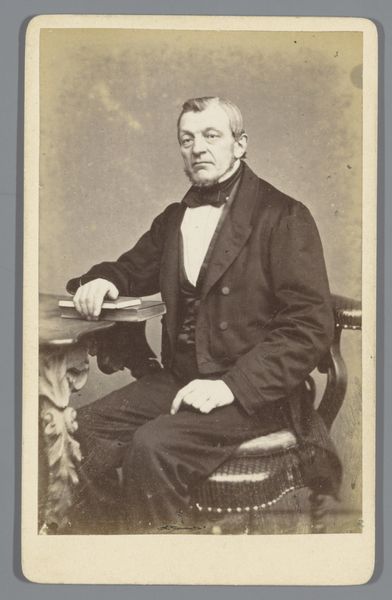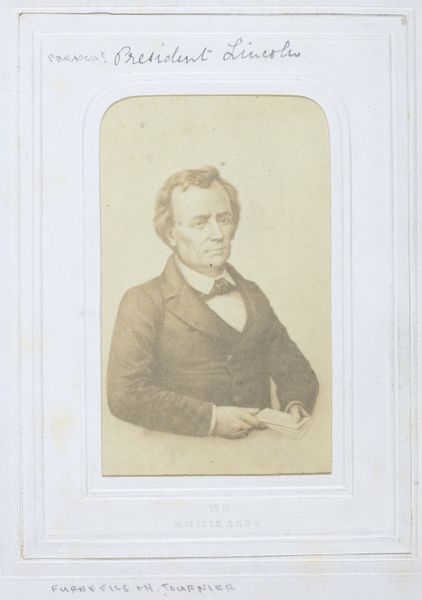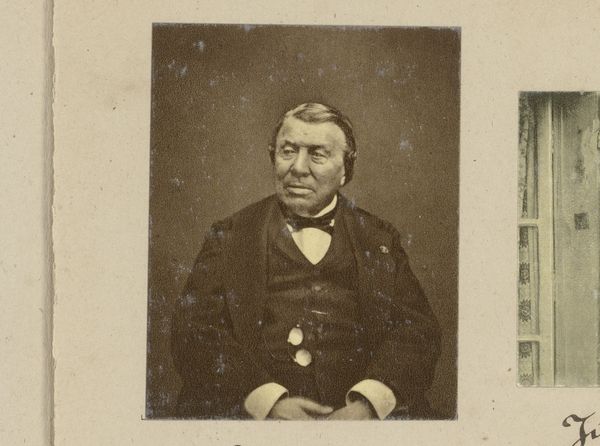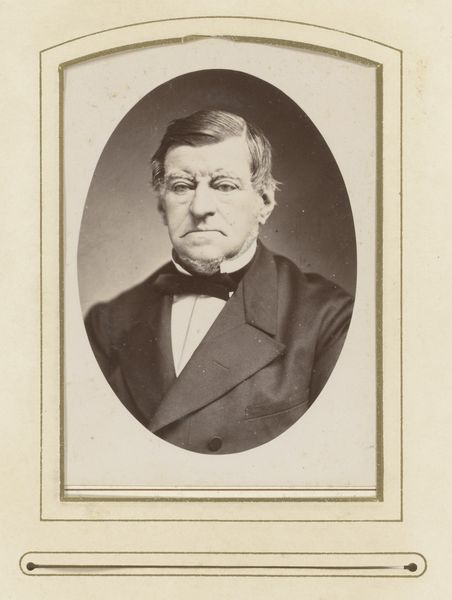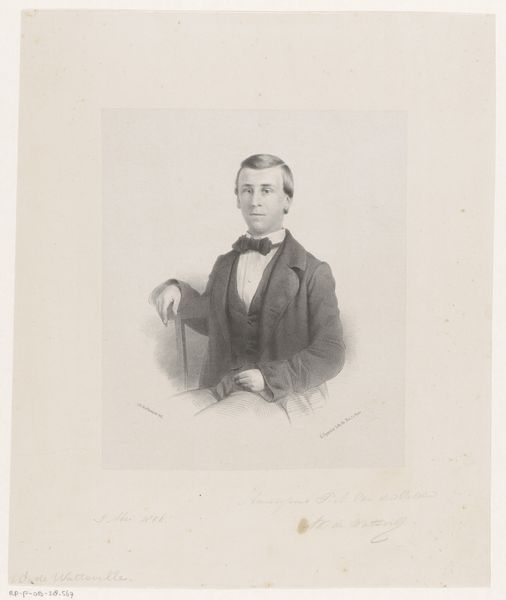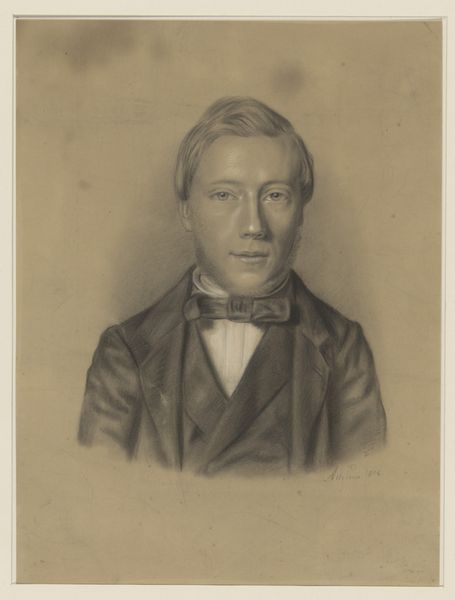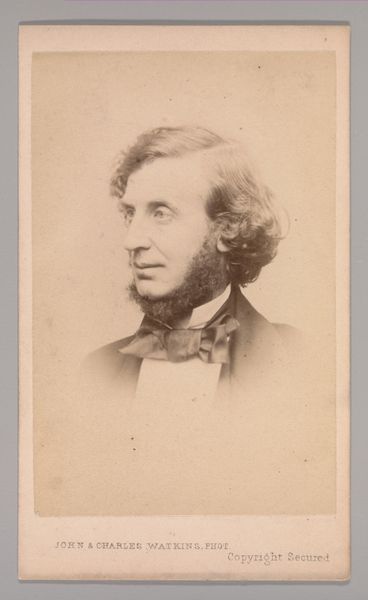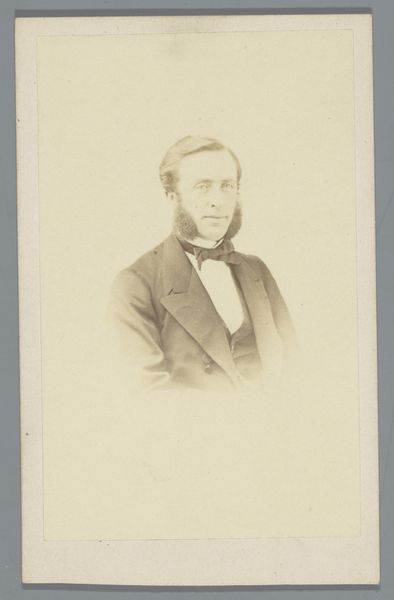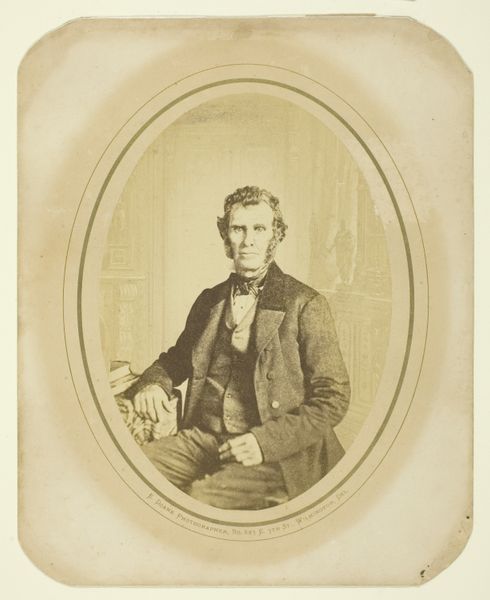
daguerreotype, photography
#
portrait
#
daguerreotype
#
photography
#
realism
Dimensions: Image: 13 1/4 × 10 13/16 in. (33.7 × 27.5 cm)
Copyright: Public Domain
Curator: This is a daguerreotype of Ralph Waldo Emerson, produced by Mathew Brady between 1854 and 1858. Editor: It's haunting, isn't it? The sepia tones, the slight imperfections...it gives a strong sense of a moment captured, a feeling of quiet contemplation. Curator: Brady's studio played a significant role in shaping how prominent figures were visually represented to the public. Portraits like this helped to solidify Emerson's image as a leading intellectual of the time. Consider the socio-political forces at play. Editor: Indeed, and beyond that, Emerson's gaze avoids direct confrontation, aligning more with a passive intellectualism. What do you think this portrayal says about 19th-century America's attitude toward its thinkers? Was it projecting their values of gentility and quiet thought on them, for public endorsement? Curator: Absolutely, these early photographic portraits had immense power to frame their subjects in specific ways. Note that the choice to use a relatively new technology—the daguerreotype—to immortalize someone as significant as Emerson underscores photography's ascendance within the echelons of artistic recognition and popular culture at that time. How do you read Emerson's pose itself? Editor: The subdued posture reinforces this image of measured intellect. He seems like someone observing rather than engaging, which ties into notions of privilege and a removed standpoint for analysis, characteristic for men in that era. It would be so revealing to find the record of this photograph's reception in the contemporary critical journals. Curator: Tracking those receptions would give a sense of how the daguerreotype actively constructed his public persona—revealing the expectations and biases that existed at that time, that is. The art world does not operate in a vacuum, but reflects its surrounding circumstances. Editor: Agreed. It really encapsulates a specific historical perception, offering, in the end, an evocative document—part revelation and part imposed fiction—of a pivotal thinker during an epochal era. Curator: A powerful glimpse, mediated of course, into both the man and the age that sought to define him.
Comments
No comments
Be the first to comment and join the conversation on the ultimate creative platform.
